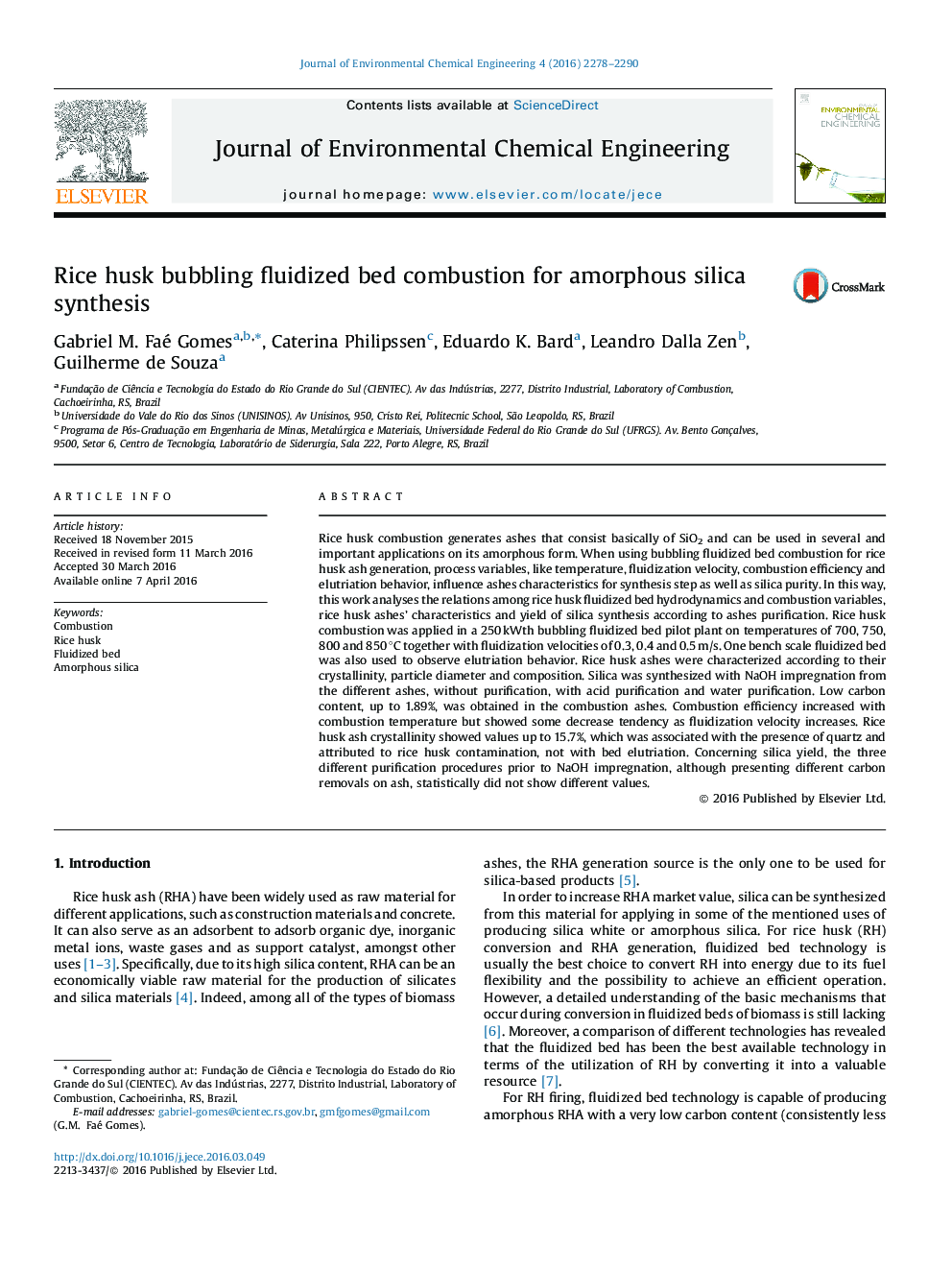| Article ID | Journal | Published Year | Pages | File Type |
|---|---|---|---|---|
| 221713 | Journal of Environmental Chemical Engineering | 2016 | 13 Pages |
•Rice husk combustion on bubbling fluidized bed with different conditions was applied.•Rice husk ashes characteristics were related to combustion conditions.•Velocities up to 0.30 m/s produced ashes with better characteristics.•Amorphous silica was synthetized from rice husk combustion ashes.•Different purification methods showed statistically the same silica yield.
Rice husk combustion generates ashes that consist basically of SiO2 and can be used in several and important applications on its amorphous form. When using bubbling fluidized bed combustion for rice husk ash generation, process variables, like temperature, fluidization velocity, combustion efficiency and elutriation behavior, influence ashes characteristics for synthesis step as well as silica purity. In this way, this work analyses the relations among rice husk fluidized bed hydrodynamics and combustion variables, rice husk ashes’ characteristics and yield of silica synthesis according to ashes purification. Rice husk combustion was applied in a 250 kWth bubbling fluidized bed pilot plant on temperatures of 700, 750, 800 and 850 °C together with fluidization velocities of 0.3, 0.4 and 0.5 m/s. One bench scale fluidized bed was also used to observe elutriation behavior. Rice husk ashes were characterized according to their crystallinity, particle diameter and composition. Silica was synthesized with NaOH impregnation from the different ashes, without purification, with acid purification and water purification. Low carbon content, up to 1.89%, was obtained in the combustion ashes. Combustion efficiency increased with combustion temperature but showed some decrease tendency as fluidization velocity increases. Rice husk ash crystallinity showed values up to 15.7%, which was associated with the presence of quartz and attributed to rice husk contamination, not with bed elutriation. Concerning silica yield, the three different purification procedures prior to NaOH impregnation, although presenting different carbon removals on ash, statistically did not show different values.
Graphical abstractFigure optionsDownload full-size imageDownload as PowerPoint slide
